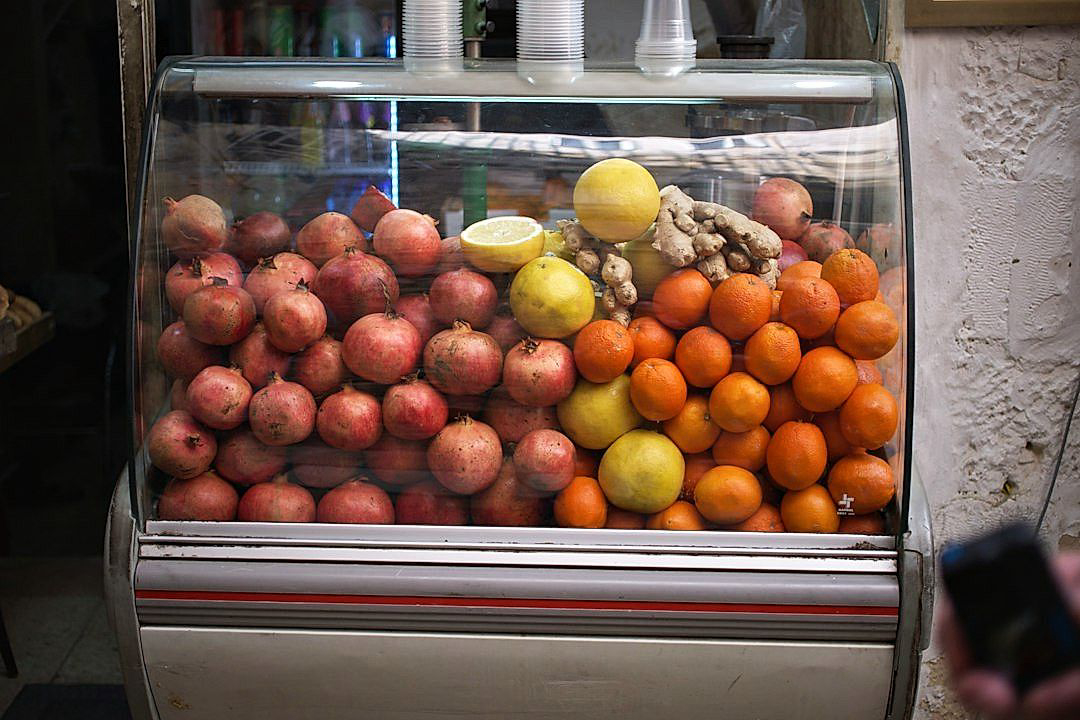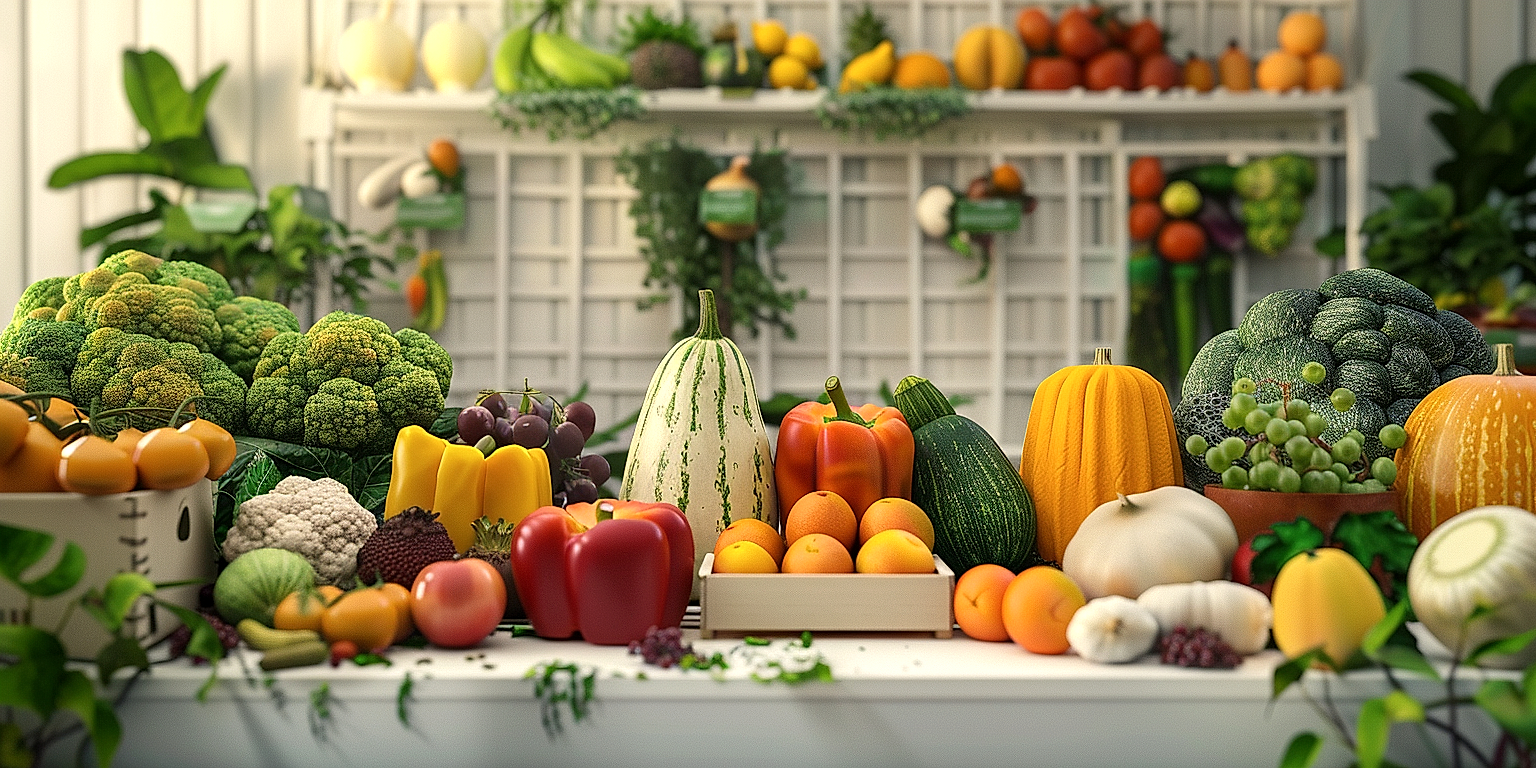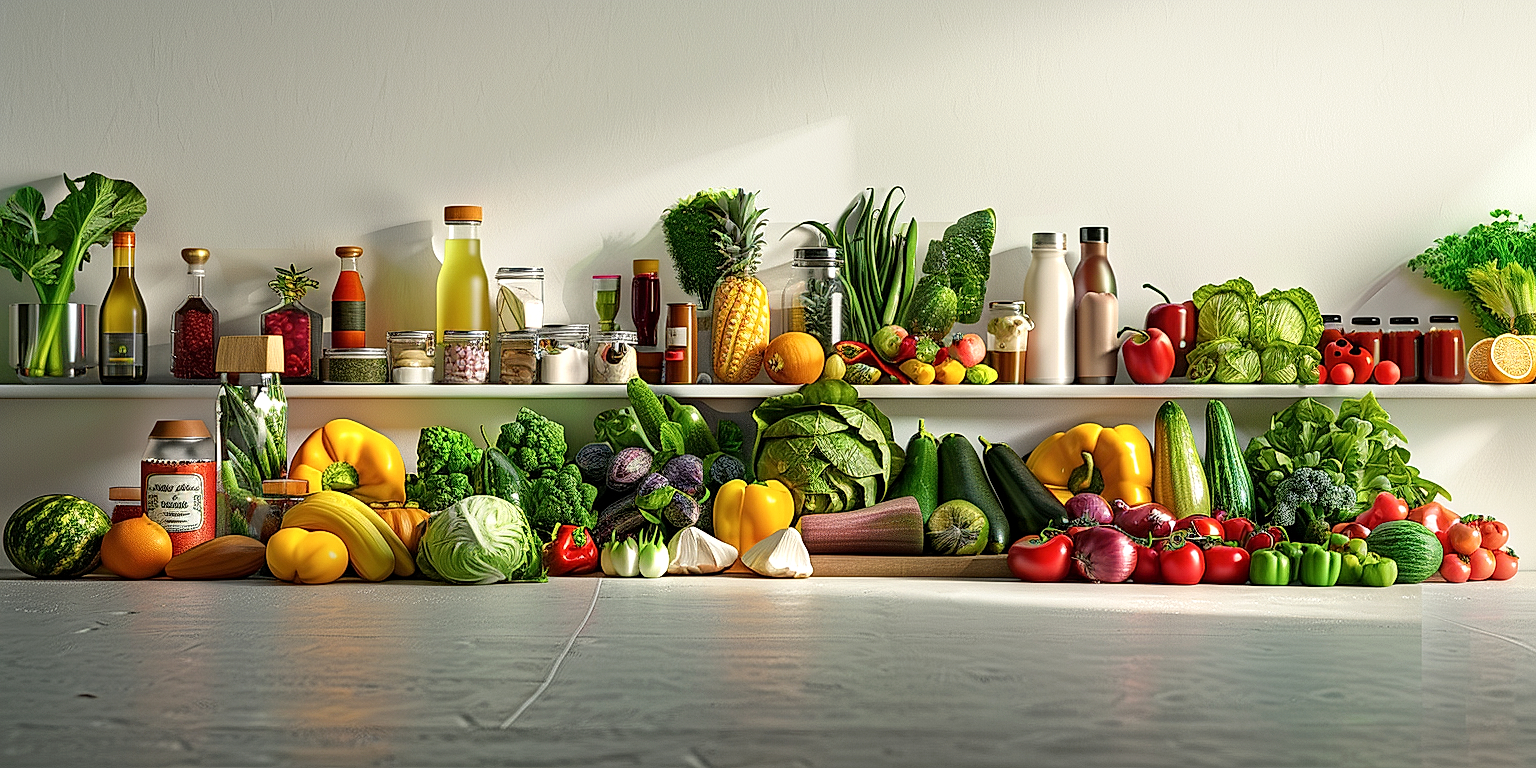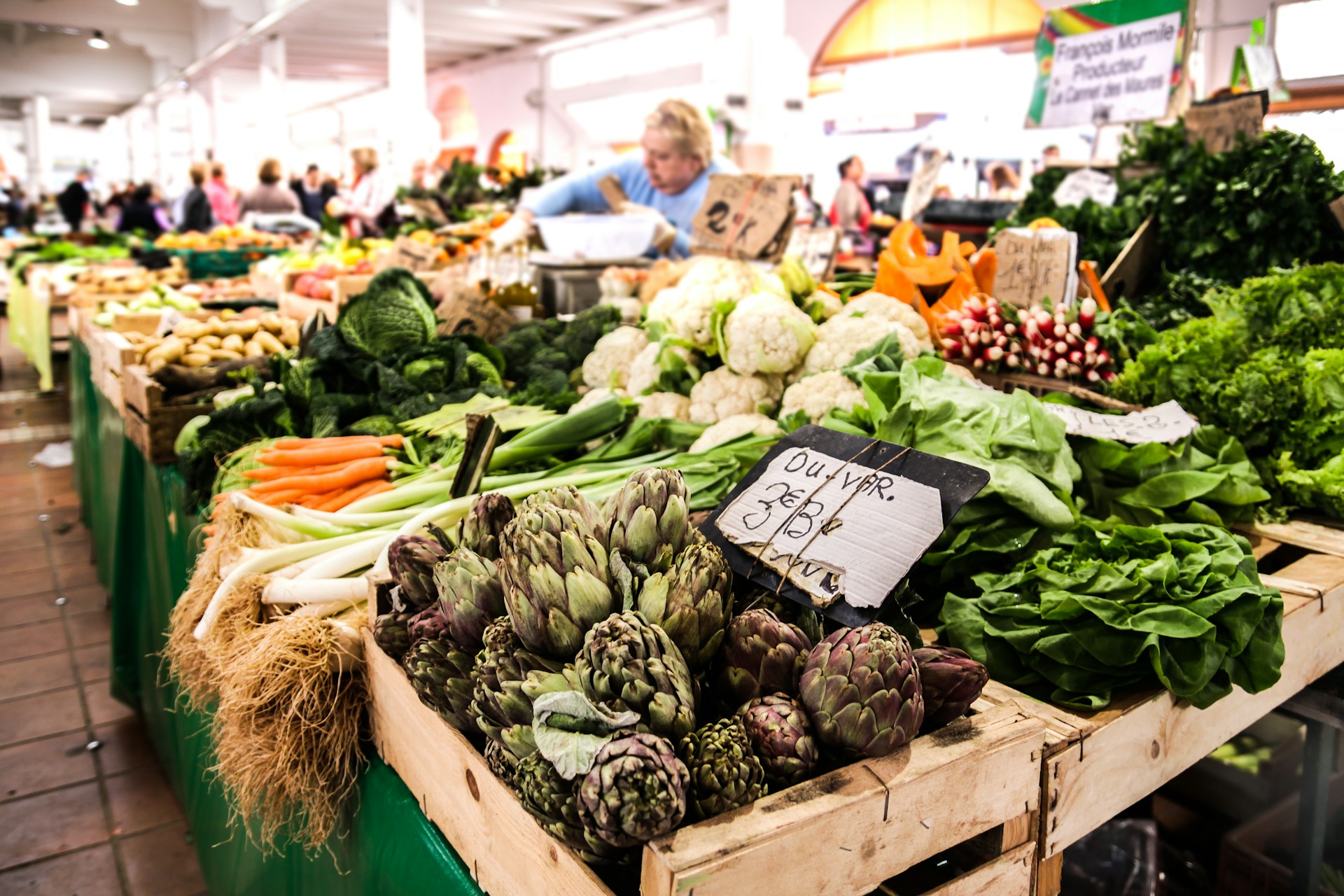Effective merchandising strategies are potent weapons in the competitive produce retail industry.
This aspect goes beyond the simple presentation of fruits and vegetables on the store shelves; it involves a critical understanding of various factors such as consumer behaviour, sales dynamics, and product placement.
Sadly, many retail establishments tend to overlook the power of well-executed merchandising techniques.
The aim here is to shift this perspective and shed light on the significant role merchandising plays in enhancing retail experiences.
We will delve into how taking the reins of this crucial aspect can optimize your retail performance.
Moreover, we will frame some of the best practices you can employ to level up your retail space.
Contents
- Ways To Enhance Produce Retail With Effective Merchandising
- 1. Implement eye-catching, well-lit fresh produce displays.
- 2. Use Creative Signage for Product Information
- 3. Arrange produce by type and color.
- 4. Offer product tasting and free samples.
- 5. Theme Displays Reflecting Seasons or Holidays
- 6. Keep shelves fully stocked at peak times.
- 7. Maintain high levels of cleanliness in the area
- 8. Highlight Organic or Locally-Sourced Items
- 9. Use Cross-Merchandising to Suggest Meal Ideas.
- 10. Regularly rotate and refresh produce for freshness.
- The Bottom Line
Ways To Enhance Produce Retail With Effective Merchandising
1. Implement eye-catching, well-lit fresh produce displays.
Successful produce retail begins with eye-catching, well-lit fresh produce displays that draw in customers and encourage them to buy.
Aesthetics are crucial in retail, and produce is no exception.
Beautiful displays that effectively showcase the freshness and quality of the items can be a major selling point for customers.
Well-lit displays are especially important when selling produce as it enhances the colours and textures of fruits and vegetables, making them more appealing to shoppers.
A strategically arranged display not only looks appealing, but it can also make shopping easier and more enjoyable for your customers.
Lighting is a significant part of this; having the right amount of light can dramatically impact a display’s effectiveness.
It’s important to have enough lighting to highlight the produce but not so much that it becomes harsh or glary.
The type of lights used can have an impact as well, with LED lights often being a good choice for their energy efficiency and ability to accurately represent colours.
An exciting display should also be engaging to enhance the customer’s shopping experience even more.
Interactive elements like signage or stickers can add an extra layer of interest to a produce display.
Customers are more likely to purchase items that they can touch, smell, and examine closely.
So, ensuring that your produce is accessible and well-presented will likely result in higher sales.
Large, bold signage can also catch the eye and provide useful information about the items on display.
It’s crucial to regularly update your displays to keep them fresh and interesting for repeat customers.
By creating a visually appealing and well-lit produce display, you can make your store’s produce section a place where customers want to spend time and money.
Through careful planning, mindful lighting strategies, and engaging presentation, your produce display can drive buyer interest and boost sales.
2. Use Creative Signage for Product Information
Thoughtful, creative signage plays an integral role in effective produce merchandising.
From guiding customers towards certain products to communicating valuable information, signage can often be the silent salesperson in the produce aisle.
Moreover, it’s not just about having signage, but about making it creative, aesthetically pleasing, and informative, all at the same time.
Through compelling design and thoughtful messaging, signage can not only highlight health benefits or special deals but can also add character to your store environment.
Taking advantage of different materials, colors, and fonts allows you to set a certain atmosphere that differentiates you from your competitors.
More so, illustrations and symbols add another visual element that helps customers grasp the information quickly.
A popular technique is to display product information such as origin, flavor profiles, or preparation tips, in a storytelling format to engage customers.
This creates a connection with the customer, making them feel more engaged and informed about what they’re buying.
In addition, keeping sign content fresh and regularly rotated is key to maintaining customer interest and trust.
An outdated or irrelevant sign can quickly turn a customer off, while new and updated signs imply freshness and care.
Furthermore, utilizing digital signage tools can also be explored, as these can give your store a modern look and offer dynamic content and interactive experiences.
Nevertheless, all your creative efforts should be easy to read and understand from a distance, ensuring visibility throughout your store.
At the same time, it’s also important to consider any legal requirements for information display on certain products so that all the necessary information is included.
In general, through creative and thoughtful use of signage, your produce store can enhance the shopping experience, improve product visibility, and establish a unique store image.
Therefore, while it may be easy to overlook, the importance of creative, effective signage in produce retail should not be underestimated.
3. Arrange produce by type and color.
One of the most impactful ways to enhance your produce retail space is by arranging the produce by type and color.
This method is not only aesthetically pleasing, but it also makes it easier for your customers to find what they are looking for.
Imagine a shopper entering your store with a specific list.
Grouping similar items together – for example, all the apples, regardless of variety – helps customers locate desired items quickly and efficiently.
Color coordination not only draws the eye but also unconsciously appeals to customers’ sense of order and organization.
By incorporating the principles of color theory, you can create visually compelling displays that help guide customers through your produce section.
For instance, placing red strawberries next to the green of limes plays up the contrast and creates visual interest.
Using color gradients, from light to dark or from warm to cool, can create a sense of movement and draw the eye across a display, subtly encouraging consumers to peruse more of your offerings.
Beyond aesthetics and layout ease, arranging your produce by type and color also has practical benefits.
It can substantially reduce the time employees spend restocking and maintaining the displays.
Having a designated spot for every kind of produce ensures clarity for both staff and customers.
A structured layout can also yield insights about what products are selling well and which items may need to be reevaluated or replaced.
Overall, the presentation of your produce plays an important role in attracting customers, boosting sales, and maintaining an efficient retail operation.
Color and type categorization is a fundamental merchandising strategy that, when executed effectively, can contribute greatly to these goals.
Remember, the end goal of arranging produce by type and color is to enhance the overall shopping experience, making it easier, more efficient, and more enjoyable for your customers.
4. Offer product tasting and free samples.
One incredibly effective way to enhance the retail experience in the produce section of any store is by offering product tasting and free samples.
This approach not only provides customers with an opportunity to try the product before they commit to purchasing it, but can also introduce them to new produce they may not have considered before.
Free samples serve as a tangible representation of the product, and can greatly influence a customer’s decision to buy.
For instance, a flavorful apple sample can encourage a shopper to purchase a bag of them.
In essence, offering samples is very much a win-win situation it piques customers’ interest, and potentially boosts your sales.
Tactile and tasting experiences humanize the shopping process, making it more enjoyable and engaging.
These strategies can be particularly effective when used to showcase the produce of a newly introduced product, or to highlight seasonal offerings.
It’s important to change up the samples available to avoid repetition and to continually engage your customers with new and different tastes.
Remember to display your samples prominently – either by the relevant product or at the end of the aisle – to maximize visibility and customer access.
For safety purposes, ensure that the samples are hygienically prepared and served, and all safety regulations have been adhered to.
Consider partnering with vendors or growers to offer these tastings – this could diversify the offering and introduce your customers to a wider range of products.
Also, use signage to indicate where samples and tastings are located.
Above all, the samples should be fresh, look appealing, and give the customer a positive image of what they are buying.
This can be achieved through regular monitoring of the sample area and swift replacement of any samples that are no longer fresh.
Offering product tastings and free samples is a proven strategy to increase foot traffic in your produce department and ultimately, drive up sales.
5. Theme Displays Reflecting Seasons or Holidays
Creating theme displays that reflect the current season or an upcoming holiday is a potent strategy for enhancing produce retail with effective merchandising.
This approach draws shoppers’ attention and encourages them to buy products they may not usually purchase, especially if they are looking for items to fit a holiday or seasonal recipe.
Moreover, seasonal displays are crucial for making a supermarket or grocery store setting appear more engaging and less sterile.
They break the monotony in the produce section by offering visually delightful displays that keep customers interested.
In addition, these displays can inspire customers to buy fresh produce in bulk for holiday feasts or parties, significantly boosting store sales.
For example, during the autumn harvest, a store could create a vibrant display of apples, pumpkins, and squashes with golden leaves for accents, a clear nod to Thanksgiving and Halloween celebrations.
Dedicating a portion of the retail space to colorful Easter displays full of fruits and vegetables also shows the store’s effort in catering to their customers’ need for seasonal decor.
Additionally, during Christmas, a display with pomegranates, avocados, kiwis, and other green and red fruits can create a festive ambiance, generating a strong homeowner’s association.
Moreover, it’s not always about the major holidays. Stores can also create smaller themed displays for minor holidays like National Spinach Day or Strawberry Day, celebrating the diversity of fresh produce.
This creativity further promotes consumer interaction as they’d be curious to explore these unique themes.
Notably, it’s essential to ensure that these displays are timely set-up and cleared after the season or holiday to maintain freshness and relevance.
Themed displays, seasonal or holiday-based, provide a unique approach to getting customers to engage more with the produce section, potentially leading to an increase in sales.
This strategy is particularly effective because it appeals to customers’ nostalgia and sentimental associations, taking advantage of the emotional ties to holidays and seasonal traditions.
Applying this merchandising tactic can successfully take a grocery store’s produce retail from mundane to vibrant and attracting, appealing to customers’ emotions and purchasing decisions.
Therefore, integrating seasonal and holiday themes into your produce retail stratagem can elevate your merchandising effectiveness, enabling you to tap into a dynamic marketing environment.
With strategic planning and creative execution, themed displays can become a potent tool in a grocery store’s produce retail arsenal.
6. Keep shelves fully stocked at peak times.
Keeping shelves fully stocked at peak times, is an important factor in enhancing produce retail with effective merchandising.
It creates an impression of abundance and choice, making customers more likely to make purchase decisions.
It’s a key player in enhancing customers’ shopping experience and increasing your sales.
You should identify the peak times in your store and ensure that retail shelves are filled during those times.
This involves knowledge of customer behavior and trends, as well as effective inventory management.
During peak times, the store is usually busy and customers tend to grab items quickly from the shelves.
If shelves are not fully stocked, customers may find it difficult to get their preferred items, leading to dissatisfaction and possibly lost sales.
Fully stocked shelves also give the impression that your store is well-managed and has a steady supply of fresh produce.
This can help to build customer trust and loyalty, contributing to repeat business.
In keeping your shelves full, you also need to consider the visual appeal of the items.
The way the fruits and vegetables are arranged can have an effect on how attractive they appear to customers.
Naturally, products that are more visually appealing tend to sell better.
Therefore, part of effective merchandising involves arranging and displaying items in a way that optimizes their visual appeal.
Additionally, keeping shelves fully stocked may also contribute to reducing waste.
If product is always available, customers are likely to purchase what they need instead of stocking up, reducing the chance of produce going bad.
In summary, keeping shelves fully stocked during peak times is a key merchandising strategy that can enhance produce retail by improving the shopping experience, boosting sales, building customer loyalty, and minimizing waste.
7. Maintain high levels of cleanliness in the area
Keeping a high standard of cleanliness in the produce section is not just a matter of aesthetics, but also a critical factor in retail success.
In a shopping environment where customers touch, smell, and inspect items before purchase, a clean and hygienic environment is mandatory.
Dirty or messy environments can deter customers, leading to decreased sales and damage to the store’s image.
Maintaining cleanliness in the produce section enhances the perception of fresher and quality products, thereby heightening customer satisfaction.
Daily cleaning tasks such as sweeping, mopping and wiping down displays play crucial roles in maintaining a clean environment.
Periodic deep cleaning is also necessary to remove any soil or dirt accumulated over time.
Attention should also be paid to cleaning tools as dirty tools can contaminate fresh produce, potentially leading to foodborne illnesses.
Every member of the staff should be responsible for cleanliness and understand appropriate cleaning procedures.
Regular training sessions can help to ensure this, and a cleaning schedule can provide structure to the procedure.
Keeping produce areas clean also extends to the back of the store, such as warehouses and cool storage areas.
These areas should be kept at the correct temperatures and cleaned regularly to prevent the spread of bacteria and preserve the quality of the produce.
Trash bins and waste disposal areas should be maintained properly to prevent unpleasant odours that could taint the freshness of the produce.
Investing in high-quality cleaning products is a necessary expense as they assure a safe, healthy environment and enhance business image.
Applying these practices can result in a produce retail that not only looks appealing, but also enhances the customers’ shopping experience, leading to higher customer retention and increased sales.
8. Highlight Organic or Locally-Sourced Items
The trend of organic and locally-sourced food has been on the rise and retail produce merchandising should leverage this to their advantage.
Customers today are more conscious of their health and environment, hence, organic and locally-sourced items are in higher demand.
Produce sections that dedicate space to highlight these items specifically can not only contribute to increased sales, but also build a positive brand image in the eyes of consumers.
Apart from benefiting the retailers, it also supports local agriculture and businesses which creates a sense of community pride.
The organic or locally-sourced produce must be clearly segregated from conventional produce, this will provide a better shopping experience for the health and environment conscious customer.
Signage can play a significant role in highlighting organic or locally-sourced items, they must explicitly state the source of the produce and the benefits of consuming them.
Distinct branding, packaging or simply a well-placed logo representing local farming can effectively distinguish organic and locally-sourced items from the rest.
A strategy of keeping these products at eye-level or in prime spots of the section will ensure they grab customer attention instantly.
Rotating the display of organic or locally-sourced items regularly not only ensures freshness but also keeps the display engaging for the repeat customer.
Training sales staff to emphasize on the source of the produce and the benefits upon enquiry might encourage customers to try these items.
To give customers a firsthand experience, retailers can offer tasting sessions of organic or locally-sourced items so they can distinguish the superior quality and taste.
Organic and locally-sourced produce may be priced slightly higher than conventional produce, explaining the reason behind this price difference, such as the quality of the product and benefits it provides, needs to be communicated clearly.
Lastly, retailers can engage in cross-merchandising by suggesting meal ideas or recipes using organic produce, it not only promotes the product but also eases the decision-making process for the customer.
Including organic or locally-sourced items in loyalty programs or offering discounts during peak buying seasons can greatly enhance their sales.
Adopting these strategies will not only increase sales of organic or locally-sourced items but also position the retailer as a responsible and forward-thinking business.
9. Use Cross-Merchandising to Suggest Meal Ideas.
When aiming to enhance the experience of customers in your produce section, the use of cross-merchandising is an excellent strategy to consider.
This method involves pairing or grouping complementary items together, with the aim of promoting product discovery and potentially increasing sales.
By suggesting meal ideas through this method, you can inspire your customers and encourage them to purchase more.
In implementing this, it’s crucial to have a good understanding of the products you sell.
For instance, placing bell peppers close to onions could evoke thoughts of a stir-fry in your customer’s mind.
This approach turns ordinary produce shopping into a more interactive and creative process for your customers, fostering a better shopping experience.
When applying cross-merchandising, catering to diverse dietary preferences such as vegetarian, vegan, gluten-free, and so on is also an excellent tactic.
By leveraging the use of signage or visual aids, such as recipe cards, the appeal of this method can be made even stronger.
Consequently, this not only guides the customer’s product choice but also boosts their confidence in their purchase decisions.
The use of this merchandising strategy also conveys care and understanding of customer needs, which can help build trust and loyalty.
Besides promoting produce sales, cross-merchandising with other grocery departments (e.g., pairing spinach with salad bowls and dressing) could increase your overall sales revenue.
However, it’s vital to remember that effective cross-merchandising requires regular updating and monitoring to ensure products stay fresh and appealing.
By doing so, you ensure that the curated meal ideas always appear fresh and inviting, contributing positively to the overall shopping experience.
In the end, the process of cross-merchandising can be a versatile and potent tool in any produce retailer’s arsenal.
It can create a more interactive and immersive shopping environment, encourage multiple purchases, inspire meal ideas, and ultimately lead to improved customer satisfaction and loyalty.
Don’t underestimate the power of thoughtfully combined fruits and veggies in your produce section.
10. Regularly rotate and refresh produce for freshness.
Having fresh produce is one of the key factors in a successful produce retail business.
Displaying fruits and vegetables that are vibrant and fresh-looking not only attracts customers but also tells them about the quality of your products.
Regularly rotating and refreshing your produce maintains this fresh appearance and optimizes the shelf life of your products.
Stock rotation, also known as first-in-first-out method, is an effective way to keep your produce fresh.
This method involves moving the older stocks in front and placing the new stocks at the back.
This ensures that the older stocks get sold first before they start to lose their freshness.
If the older stocks are not sold in time, they should be removed from the display and replaced with fresher stocks.
In addition to rotation, it’s also important to keep your produce well-hydrated.
Some fruits and vegetables, like leafy greens, can lose their crispness quickly if not properly hydrated.
Having a misting system in place can provide the necessary humidity to keep your produce fresh and appealing.
However, proper care must be taken to avoid overwatering as it can lead to the growth of molds and bacteria.
Regularly checking the quality of your produce not only prevents spoilage but also maintains the overall hygiene of your retail store.
Any bruised, damaged or rotten produce should be immediately removed from the display to prevent the spread of bacteria.
In case of any signs of pests or rodents, immediate action must be taken to eliminate them as they pose a threat to the freshness of your produce.
Appropriate temperature control is another factor that can greatly affect the freshness of your produce.
Each type of fruit or vegetable has its own preferred temperature range and humidity level for maximum freshness.
Understanding these requirements and providing the appropriate storage conditions can significantly extend the shelf life of your produce.
Finally, engaging with your customers and encouraging them to buy fresh produce regularly can create a continuous flow of stocks, which helps in maintaining the freshness of your product offering.
The Bottom Line
Maintaining an appealing and efficient fresh produce section requires a combination of strategic display techniques, engaging marketing tactics, and high cleanliness standards.
Merchandising tactics such as well-lit and color-coordinated displays, creative signage, and tastings can pique customer interest and encourage purchasing decisions.
Seasonal themes and store cleanliness add to the overall shopping experience while highlighting organic or locally-sourced items caters to conscious consumers.
The practice of cross-merchandising further adds value by easing meal planning for customers.
Importantly, a continuous rotation of fresh produce can guarantee the freshest offerings.
These elements collectively form the foundation for a successful fresh produce department that can have a significant impact on overall store performance.




